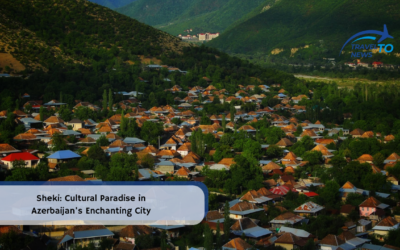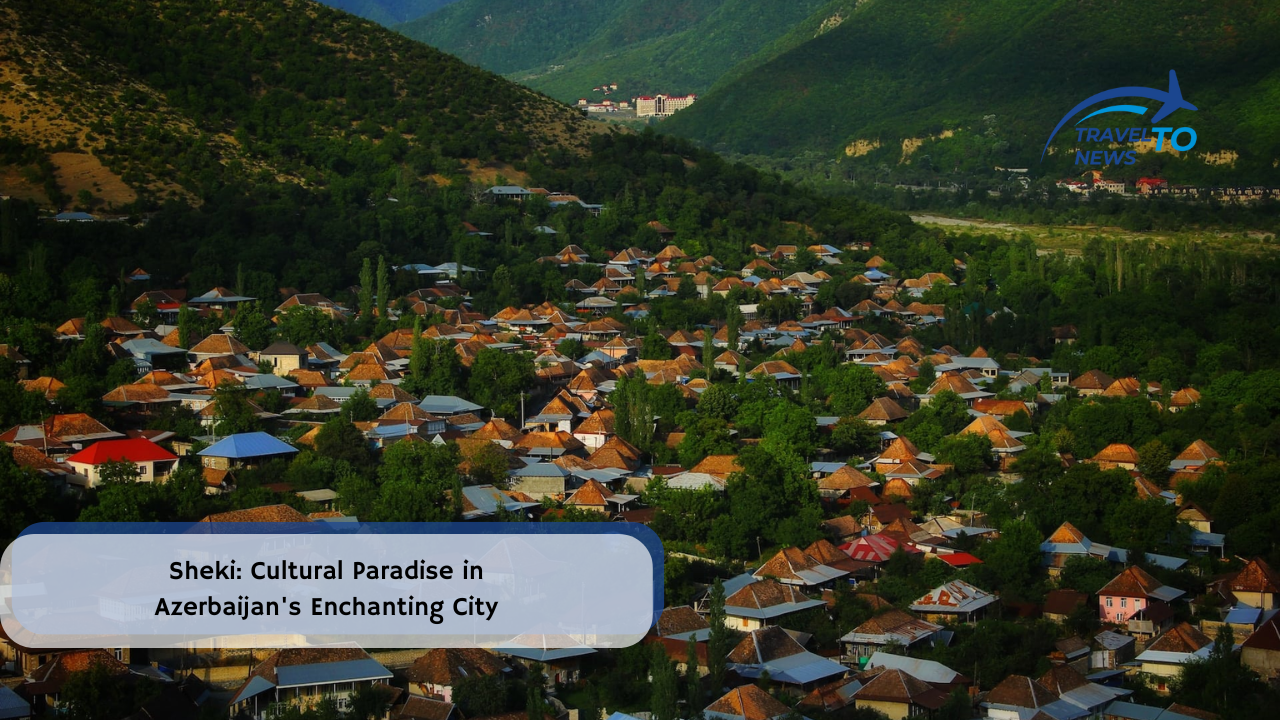Unyielding Resilience: How Bangladesh Thrives Amidst Shape-shifting Land and Natural Disasters

Explore the incredible story of Bangladesh, a nation that not only survives but thrives on shape-shifting land. Learn how its people adapt to frequent natural disasters through resilience and innovation
Table of Contents
When it comes to resilience, innovation, and adaptation, few nations can truly compete with the indomitable spirit of Bangladesh. Bangladesh is not just a nation surviving against all odds, but one that thrives, living on what can be described as shape-shifting land. Illustrative of the challenges presented by this unique landscape, the Bengali people exhibit a profound resilience that captures the heart and imagination.
Squeezed into the fertile landscape between the Himalayas and the Indian Ocean, Bangladesh is a country full of paradoxes. Its geography is dominated by the world’s largest delta system—the Ganges-Brahmaputra-Meghna. This labyrinth of rivers, streams, and tributaries has led to the formation of incredibly fertile land. But it also leads to the remarkable phenomenon that the topographical contours of the country are constantly changing. No piece of land stays the same for too long, shifting with the ebb and flow of the turbulent rivers. It is a fluid, changing panorama, people’s homes disappearing overnight only to reappear somewhere else days or even months later. Thus, the land upon which the inhabitants of Bangladesh build their homes and nurture their crops is perpetually evolving.

Yet, it is the same capricious waterways that make this country so vulnerable to climatic adversities. Floods, hurricanes, and land erosion frequently wreak havoc on the low-lying areas. These natural disasters, propelled by climate change, have caused immense human suffering and financial loss—their impacts amplified by the country’s high population density. Nearly every year, millions of people are displaced from their homes, their lives uprooted by the whims of the mighty nature.
Indeed, life in Bangladesh is not for the faint-hearted. However, the Bangladeshi people are anything but that. In the face of constant adversity, they have shown tenacious resilience, bending but not breaking. Faced with frequent reminders of nature’s power, they have learned to coexist with the uncertainty, adopting innovative ways to adapt to these unique conditions.
In the coming sections, we will explore more about this tenacity and innovative spirit that allows the Bangladeshis to not merely endure but thrive in their ever-changing homeland. Stay with us as we delve into the world of this valiant nation that has turned every challenge into an opportunity, becoming a beacon of resilience for the rest of the world.
The Geographical Challenges: Bangladesh’s Constant Battle with Nature

Much of Bangladesh’s unique character – its trials and its triumphs – can be traced back to its distinct geographical character. The country lies on the world’s most extensive delta, the Ganges-Brahmaputra Delta, also known as the Bengal Delta. This low-lying conduit of silt and sediment carried by fierce rivers from the Himalayas down to the Bay of Bengal is both a blessing and a curse.
The Geography
Bangladesh’s terrain is mainly flat, dissected by a complex network of rivers and streams that merge into the Bengal Delta – the world’s largest. Over thousands of years, these mighty rivers, the Ganges and Brahmaputra, have deposited rich alluvial soil onto the delta, creating a verdant, fertile landscape – a blessing for agriculture.
Yet, the confluence at the Bay of Bengal also makes it the perfect catchment area for monsoonal waters. Almost 80% of the country’s annual rainfall occurs during the monsoon season from June to October, turning vast areas of the country into an archipelago of islands. At the peak of the monsoon, flooding can engulf up to two-thirds of the country!
The Natural Disasters
The geographical characteristics above contribute to the region’s vulnerability to several recurring natural disasters. Floods, cyclones, and coastal erosions are the most common and devastating.
Flooding: Bangladesh is often described as a country in high water. A combination of heavy monsoons, a dense network of rivers, and relatively flat topography means flooding is an annual ordeal. These floods have devastating effects on the housing, farmland, and lives of the Bangladeshi people.
Cyclones and Storm Surges: Bangladesh’s coastline on the Bay of Bengal forms one of the most vulnerable tropical cyclone-prone areas. Each year, powerful storms lead to catastrophic loss of life and significant damage to property, with the poorest communities being affected disproportionately.
Coastal Erosion: Coastal erosion in Bangladesh results in the loss of land along the coastline and riverbanks, affecting livelihoods and resulting in displacement of people. This phenomenon is fueled further by rising sea levels due to climate change.
Bangladesh’s geography is indeed a study in paradoxes. One of the world’s most fertile regions is also one of the world’s most disaster-prone. The people of Bangladesh have had to negotiate these competing realities of abundance and devastation throughout their history. But through unique innovations and tenacity, they have demonstrated remarkable resilience in turning the land’s capriciousness into a force of strength. In our next section, we will explore some of these fascinating examples of resilience amidst diversity.
Resilient Communities: Bangladesh’s Remarkable Story of Adaptation

While Bangladesh’s distinctive geography poses challenges, the country’s resilient communities have learned to adapt to the land’s whim, harnessing its fertility while dealing with its capriciousness. Amidst the shifting landscapes and annual floods, people of Bangladesh stand as a testament to the remarkable human spirit to innovate and adapt.
Adapting to The Terrain
One striking example lies in the seasonal floating villages, or ‘Chars,’ that come into existence on temporary islands formed by river deposits. These settlements represent an impressive adaptation strategy where whole communities relocate their households and assets to higher ground during the monsoon season. They return when the water recedes, enabling them to utilize the newly fertile soils for crop cultivation.
The inhabitants have also developed unique farming practices. The indigenous Munda community, for example, practice a form of floating agriculture known as ‘dhap’ cultivation. They build floating rafts with water hyacinths and other aquatic plants, covered with soil and cow dung, on which they grow crops resilient to flooding, such as gourds and pumpkins. Not only does this technique allow farming amidst floods, but it also improves soil fertility in the post-flood phase when the raft materials decompose.
Innovative Housing and Infrastructure
Beyond their creative approaches to farming, Bangladeshis have developed housing solutions to resist natural calamities effectively. An inspiring example is the floating schools project in flood-prone areas. Non-governmental organization Shidhulai Swanirvar Sangstha has come up with schools, libraries, and training centres built on boats. These solar-powered floating classrooms ensure continuous education for children even during the monsoon season.
A noteworthy housing design is the amphibious houses that effortlessly float above rising water levels. These dwellings are built on a floating platform made of water drums and bamboo, with homes constructed from local materials including bamboo, straw, and wood. The houses remain on the ground during dry periods and float when water levels rise, effectively reducing the impacts of floods on the inhabitants.
In the capital, Dhaka, the resilience is equally visible but uniquely urban. Architect Marina Tabassum won the prestigious Aga Khan award for her innovative design of the Bait Ur Rouf Mosque. By marrying traditional techniques with modern needs, her acclaimed design ensures adequate cooling in a city swarming in heat, without reliance on energy-intensive air conditioning systems.
These strategies represent the immense adaptability and resilience of the Bangladeshi communities to the country’s disparate geographical challenges. The methods may seem unconventional, but necessitated by a tension between the people and their land, they illustrate the power of human ingenuity and resilience in the face of adversity. With alarming estimates of climate change’s future effects, these practices serve as valuable lessons for a world grappling with an increasing risk of extreme weather events and shifting landscapes.
The Crucible of Innovation: How Bangladesh Harnesses Creativity for Survival
In the face of relentless geographical and climatic challenges, Bangladesh’s story becomes one not of mere endurance, but of survival fueled by steadfast innovation. Necessity, they say, is the mother of invention, and in Bangladesh, this couldn’t ring truer. The country’s changing landscape has been a fertile ground for local innovations and engineering feats geared towards adaptation and resilience.
Local Innovations for Coping with Natural Disasters
Bangladesh has been at the forefront of developing homegrown solutions tailored to its unique environment. Innovative flood-resistant crops, such as the ‘Sub1’ rice variant, which can survive underwater for up to two weeks, have been a game-changer. This invention helps secure food resources even when fields are submerged, thus not only securing food sustainability but also providing a stable income source for farmers.
One particular engineering feat that stands tall is the country’s extensive polder system. Polders are low-lying tracts of land enclosed by embankments known as dikes. This network of polders acts as a buffer against coastal and river flooding, securing arable land from the relentless saline water intrusion. The system showcases an ingenious blend of traditional knowledge and modern engineering practices.
The centuries-old practice of ‘killa’ construction has evolved over the years too. Elevated platforms of earth called ‘killas’ are designed as safe refuges for livestock during frequent flooding, thereby protecting a vital asset for the rural economy.
The Evolution of Water Innovation
Water management in Bangladesh is a centuries-old story of evolution. In the past, people used indigenous methods to collect and store rainwater for usage during dry seasons. Over time, as the challenges intensified, the innovations became more sophisticated. The government and many local NGOs have implemented community-based rainwater harvesting systems, which store water in large tanks or reservoirs, ensuring a supply even in drought-like conditions.
Another innovation is the floating garden technique, an evolution of the traditional crop cultivation methods. Adapting to land scarcity and water abundance, Bangladeshis use water hyacinths—a species regarded primarily as an invasive weed—to create buoyant plant beds. This technique has evolved from a seasonal contingency to a productive farming practice supporting food security and livelihoods year-round.
The Triumph of Social Innovation
Bangladesh is also home to one of the social innovation marvels of our time—the birthplace of microfinance institutions like Grameen Bank, which introduced pioneering models of microcredit. This organization, under the visionary leadership of Nobel Peace Prize laureate Muhammad Yunus, has lifted millions out of poverty. The model of Grameen Bank has now been replicated worldwide, showcasing how local solutions can have a global impact.
The spirit of resilience in Bangladesh, propelled by innovation, goes beyond infrastructure and agriculture; it’s a testament to a nation that has refused to be defined by its adversities. This narrative has been shaped over the decades, as each generation of Bangladeshis contributes to the legacy of innovative survival tactics out of sheer necessity. These advancements, born from the nexus of historical knowledge and contemporary science, not merely address immediate needs, but also forge a path of resilience and sustainability for the future.
Bangladesh’s journey of innovation tells not just of survival, but of hope, ambition, and the undying human drive to adapt against the odds. As the world braces itself for the myriad challenges presented by climate volatility, the Bangladesh experience serves as a beacon, a showcase of how the crucible of challenge can give rise to a formidable culture of innovation.
Climate Change and Bangladesh: Understanding Impact and Anticipating Future Challenges

Climate change poses a grave challenge worldwide, making its effects felt through more frequent natural disasters, rising temperatures, and shifting biodiversity. As a low-lying delta region, Bangladesh is a poignant example of a country confronting the brunt of these changes head-on. This blog post delves into the impact of climate change on Bangladesh, drawing attention to the pressing challenges and vast implications.
Changing Climate, Changing Landscape
In the face of steadily rising global temperatures, the Himalayan glaciers feeding Bangladesh’s lifeline rivers, the Ganges and Brahmaputra, have been melting at an ever-accelerating pace. The resultant swelling of these rivers exacerbates Bangladesh’s inherent problem of annual flooding.
Furthermore, sea-level rise in the Bay of Bengal threatens the low-lying coastal areas of Bangladesh. A predicted sea-level rise of up to one meter by 2100 would lead to approximately 20% of Bangladesh’s landmass being submerged, displacing an enormous number of people.
Shifts in monsoon patterns have been another worrying effect of climate change. Changes in the intensity and timing of rainfall further contribute to problems of flooding and water security, impacting agriculture and thus food security.
Future Challenges and Implications
Population Displacement and Urbanization: Sea-level rise and increased flooding could displace millions of people from coastal and riverine areas in the future, making them climate refugees within their own country. This internal displacement would lead to a significant rise in urbanization, placing immense stress on cities like Dhaka, already grappling with overpopulation.
Threat to Food Security: As flooding cycles intensify, and salinity intrudes further into freshwater fishing grounds and arable land, food production is jeopardized. This threat to self-sufficiency in food production would have significant economic and health implications.
Biodiversity Loss: Bangladesh is home to the world-renowned Sundarbans, the world’s largest mangrove forest. Rising sea levels could inundate this critical frontline against cyclonic storm surges, threatening the diverse flora and fauna it houses, including the famed Royal Bengal Tiger.
Health Implications: Climate change could also raise health concerns with a potential increase in waterborne diseases and heat-related ailments.
Fundamentally, what we must remember is that Bangladesh did little to contribute to the phenomenon of climate change, yet it is among the nations bearing the harshest consequences. This calls for sobering reflection on the principles of climate justice and global responsibility. The experiences of Bangladesh not only provide important lessons on the impacts of climate change but also are compelling evidence of the urgent need for concerted global efforts to combat this existential threat.
Resilience Reimagined: The Future of Adaptation in Bangladesh

Facing the multifaceted impacts of climate change, Bangladesh continues to march forward with resilience. The journey is challenging, no doubt. Yet, with the spirit of innovation fuelling the fight, the nation continually renews its strategies for adaptation. This blog post explores the potential solutions aimed at fostering resilience and the ongoing efforts shaping Bangladesh’s future.
Strategies for Continued Adaptation
Strengthening Infrastructure: It’s not just about building infrastructure; it’s about building resilient infrastructure. Floating structures and amphibious housing can dramatically lessen the impacts of regular flooding. On a larger scale, projects like cyclone shelters have been instrumental in safeguarding lives during intense cyclones, and their continued development remains a priority.
Climate-Resilient Agriculture: Mirroring Bangladesh’s tradition for ingenious farming, cultivating flood-resistant crops and expanding aquaculture can secure food provision in the wake of climate change.
Afforestation and Protective Plantations: To combat escalating soil and coastal erosion, initiatives to plant mangrove forests serve dual purposes. They buffer against storm surges and absorb carbon dioxide, making them a vital part of a climate adaptation strategy.
Water Management: With both excess and scarcity of water posing challenges, improved water management systems are imperative. Rainwater harvesting, effective irrigation systems, and community-led initiatives to manage local resources will be key.
The Indomitable Spirit of Innovation
Propelling the nation’s resilience is its spirit of innovation: solving problems with creativity, often backed by vocational education, social entrepreneurship, and technologies.
The organization BRAC, for instance, is pioneering innovative methods to deliver education to the hardest-to-reach children. Solar-powered floating schools ensure the continuity of education even when communities are displaced during floods.
Technological intervention has also been increasingly critical. For instance, digital platforms have been utilised to disseminate cyclone warnings and weather information to rural communities, significantly reducing climate-related fatalities.
Even as it battles climate developments, Bangladesh leads in the realm of social innovation. Microfinance models from institutions like Grameen Bank were homegrown solutions that found worldwide application, demonstrating how local innovation can ripple globally.
The Future is Resilience
Every new structure built, every method adapted, each innovation realized is a testament to a country and people rooted in resilience. Each solution bears the indelible imprint of a culture that refuses to surrender to the challenges posed by nature.
As Bangladesh confronts the realities of climate change, its journey underscores the critical importance of ongoing resilience efforts. But it also highlights the vital role the global community must play in supporting countries that bear a disproportionate burden of climate change.
Bangladesh’s future will be overwhelmingly shaped by its resilience. However, their experiences serve not only as lessons in adaptation but as a clarion call to the world about the potency of innovation under duress and the ingenuity of the human spirit shining in the face of adversity.
Resilience Realized: Insights from Bangladesh’s Incomparable Journey

The tale of Bangladesh is not merely one of survival. It is a narrative of resilience, one that speaks to the strength and determination of a people who have embraced the challenges handed to them, transforming obstacles into opportunities time and time again.
At the forefront of the climate crisis, the nation has had to grapple with palpable risks and direct implications. But, in the face of these adversities, Bangladesh has proven to be a living testament to human tenacity, demonstrating the indomitable strength that arises when survival is intertwined with invention.
What sets Bangladesh apart, however, is not just the enormity of the challenges the nation faces, but the creative ways in which its people have responded. From developing flood-resistant agricultural methods to ingeniously adapting their homes, locals have continuously transformed living battlefields into laboratories for resilience. Their creativity and resourcefulness have given birth to innovative strategies and solutions that are not only locally grounded but also globally relevant.
The local adaptation strategies reflect the intricate understanding of their environment. The culturally embedded knowledge, coupled with an ability to dynamically adapt to change, propels the nation’s sustainability. The intervention of technology enhances this resilience, from mobile phones being harnessed for disaster warnings to the delivery of remote education.
Bangladesh’s resilience serves as a milestone for the rest of the world. With escalating climate change impacts, the experiences of Bangladesh offer invaluable insights into how communities can bolster their defense against these challenges. It’s a tale that emphasizes learning about resilience not just in theory, but in practice, and in the daily lives of millions of people.
Moreover, the Bangladeshi narrative amplifies the importance of understanding and recognizing climate justice. Nations contributing most to accelerating climate change should draw inspiration from Bangladesh’s resilience, acknowledging their responsibility towards supporting nations that are disproportionately impacted.
In conclusion, the story of resilience from Bangladesh is a beacon of hope, a beacon that enlightens not only their path but also illuminates ways for the world on the journey of climate adaptation. It is a clarion call for global solidarity as well as a powerful reminder of the strength of human spirit and innovation. Bangladesh’s experience amplifies that resilience is not just about withstanding but is about advancing, growing, and proving that we’re capable of co-existing with nature, no matter how harsh the realities may be.









